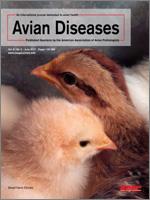Contaminated poultry meat is regarded as the main source of human campylobacteriosis. During September 2014 and February 2015, breeder flocks, hatcheries, and broiler farms from two chicken production chains were investigated chronologically. Five commercial breeder flocks (Breeder Flocks 1–5), two hatcheries (Hatcheries A and B), and five broiler flocks (Broiler Flocks 1–5) were sampled in this study. Campylobacter colonization of both breeder and broiler flocks was determined from cloacal swabs and environmental samples (pan feeders, footwear, darkling beetles, flies, feed, and water). The eggs from the breeder flocks were followed to hatcheries. At the hatcheries, early embryonic deaths, egg trays, eggshells, hatchers, and water were investigated. Cloacal swabs were taken from broilers at Days 1, 14, and 28 (all broiler flocks), and either 35 (Broiler Flocks 1 and 2) or 43 (Broiler Flocks 3–5). Thirty-six Campylobacter jejuni and 94 Campylobacter coli isolates collected through two broiler production chains were tested by twofold agar dilution for their susceptibility to antimicrobial agents. Most Campylobacter isolates were multidrug resistant (MDR), defined as being resistant to three or more antimicrobial classes (C. jejuni: 100%; C. coli: 98.9%), and exhibited high resistance to enrofloxacin (C. jejuni: 100%; C. coli: 98.9%). The vast majority of C. coli were resistant to tetracycline (97.9%), trimethoprim–sulfamethoxazole (81.9%), and doxycycline (79.8%), but only 55.6%, 36.1%, and 50% of C. jejuni isolates revealed resistance to these antimicrobial agents, respectively. A selected subset of 24 C. jejuni and 24 C. coli were characterized for their mutations in the quinolone resistance determining region of the DNA gyrase subunit A gene by nucleotide sequence analysis. The Thr-86-Ile substitution (ACA-ATA in C. jejuni or ACT-ATT in C. coli) was found in all isolates. Moreover, a total of 130 Campylobacter isolates were typed with the use of polymerase chain reaction–restriction fragment length polymorphism of the flagellin A gene (flaA-RFLP) to determine their genetic relationships. Ten distinct clusters were recognized by flaA-RFLP typing. The results showed that horizontal transmission was the major route of Campylobacter transmission in this study. In conclusion, the emergence of MDR and high resistance rates to several antimicrobials are major concerns identified in this study. The prudent use of these agents and active surveillance of resistance at the farm level are essential steps to reduce the public health risks identified in this work.
How to translate text using browser tools
27 February 2017
A Study on Campylobacter jejuni and Campylobacter coli through Commercial Broiler Production Chains in Thailand: Antimicrobial Resistance, the Characterization of DNA Gyrase Subunit A Mutation, and Genetic Diversity by Flagellin A Gene Restriction Fragment Length Polymorphism
Thotsapol Thomrongsuwannakij,
Patrick J. Blackall,
Niwat Chansiripornchai
ACCESS THE FULL ARTICLE

Avian Diseases
Vol. 61 • No. 2
June 2017
Vol. 61 • No. 2
June 2017
antimicrobial resistance
Campylobacter coli
Campylobacter jejuni
genetic diversity
gyrA mutation




